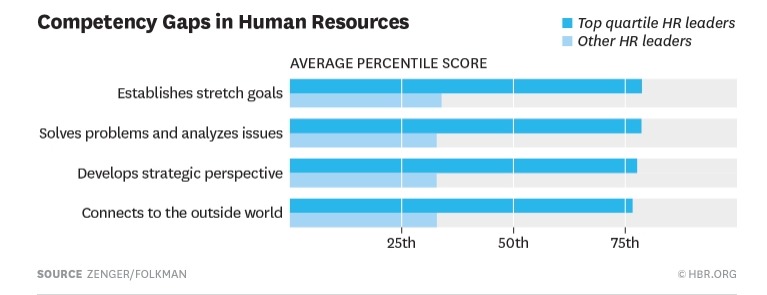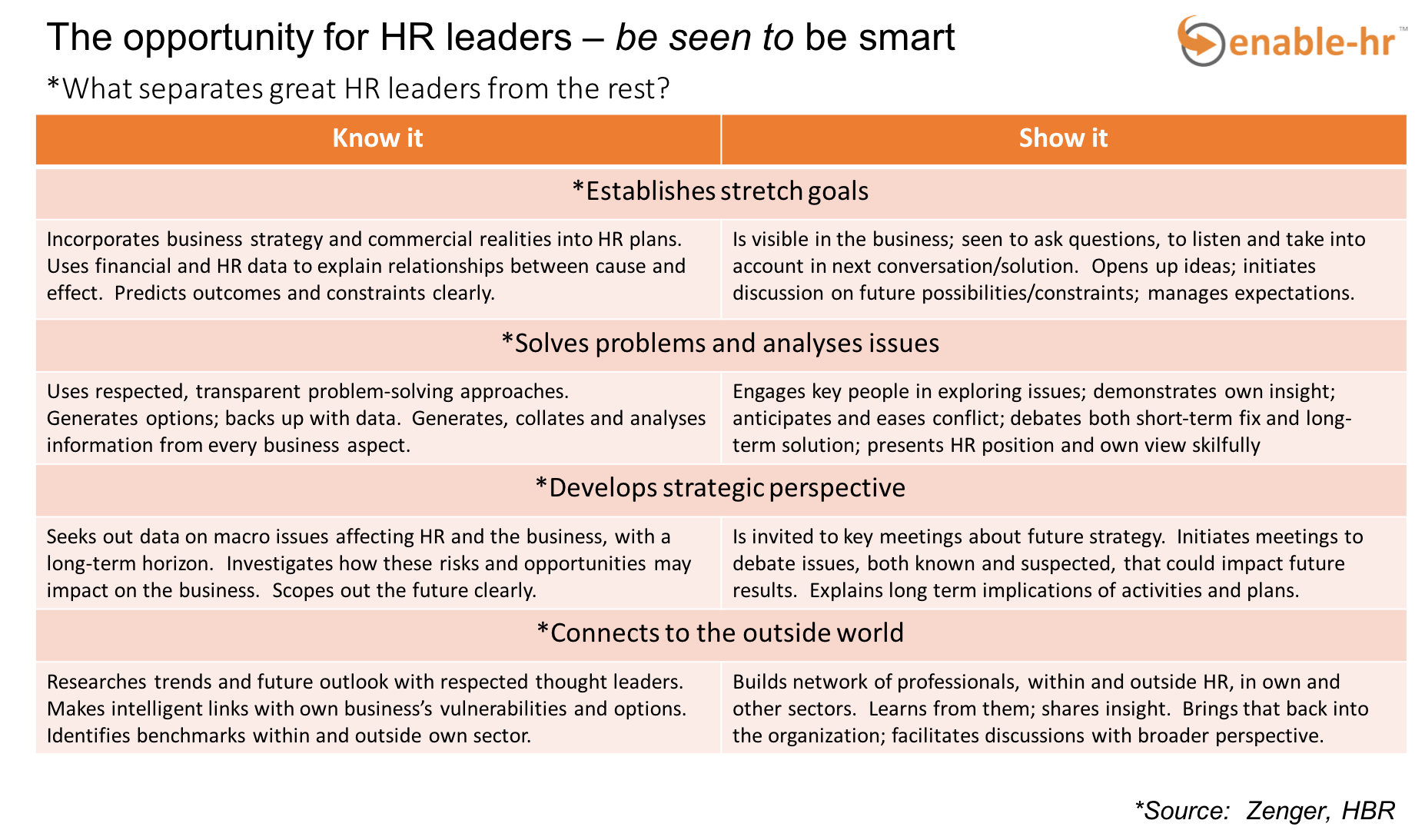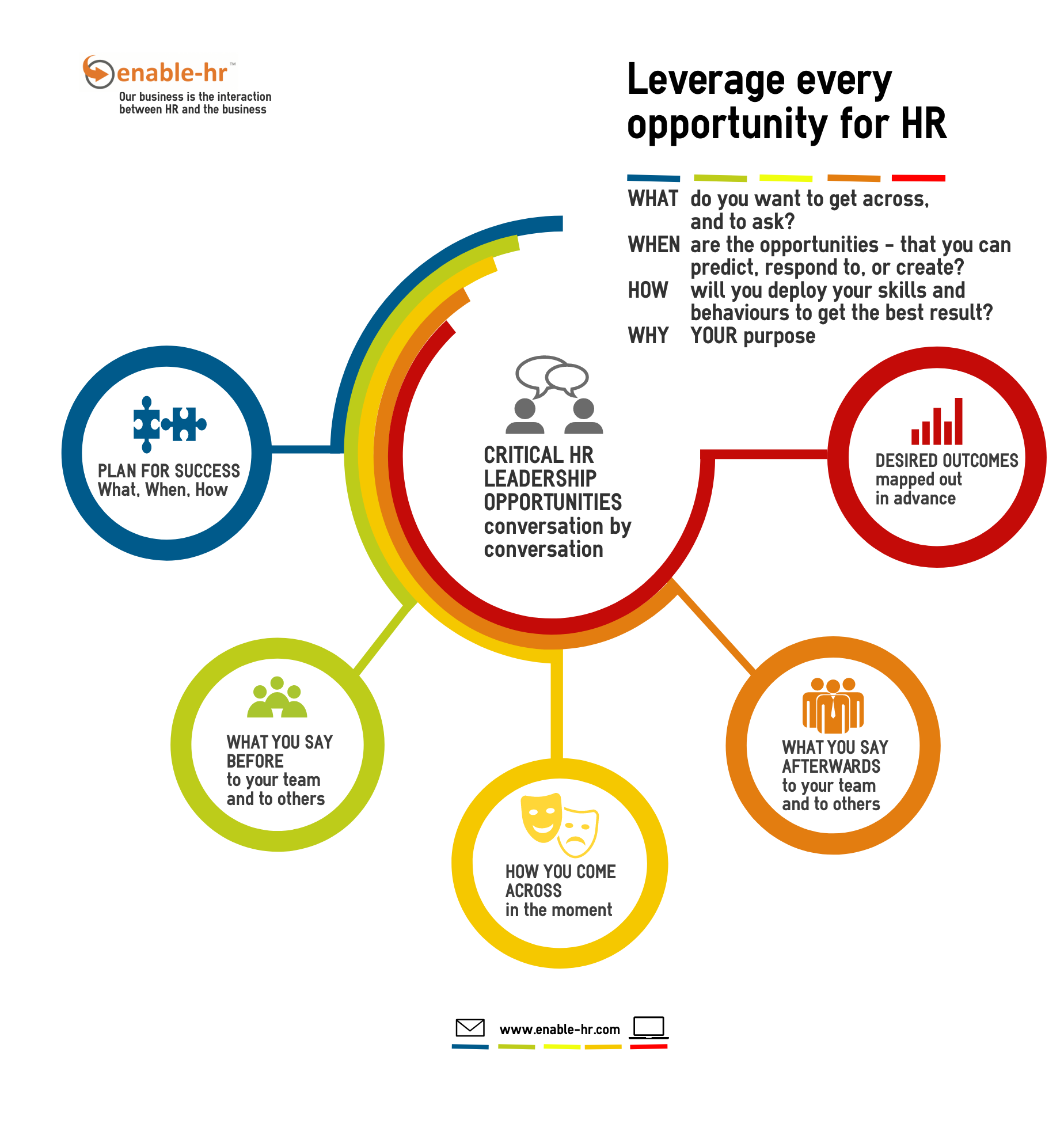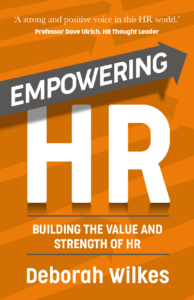Leadership is critical in all organisations and, in the current workplace instability, HR leaders need to stand out as business leaders too. HR is a complex function, and leaders in HR face demands and opportunities that could transform the function – if the depth of their understanding of the business can shine through.
Why is leadership in Human Resources more important than ever before?
Let’s look first at the nature of the seismic changes that are predicted in the world of work; AI, flexibility, agility, globalisation – it will be a challenge for every organisation to think through what it will all mean. The level of complexity is mind-boggling, and it’s pan-organisational as well as global. Bersin’s 2018 Predictions Report* is called ‘Embracing Radical Transparency’ – we have to be able to see the whole landscape, in order to understand and then build ways of working that can leverage technology:
‘HR leaders can’t create processes that are capable of supporting and nurturing the workforce in this new reality until they help their organizations reach a new, operational understanding of what work is and who is going to do it.’
HR is the only function that has visibility and reach across the whole organisation.
The quote from Bersin’s Report reveals two levels of HR engagement. What will be the balance for you between:
- Re-engineering your own HR processes, and
- Enabling the whole organisation to redesign itself?
Which comes first, 1. or 2.? At which level are you operating as a leader in HR?
That depends on how strategic your HR function is – or is seen to be.
“The link between business and HR is defining the future of HCM, as 71 percent of organizations believe that the most critical skill of HR leaders is the ability to connect initiatives to the strategy of the business.” Aberdeen Group, from article by Oracle*. Our experience shows that HR leaders often do have sound business understanding, but can miss opportunities to demonstrate this. They know it, but they don’t always show it.
There are some key performances in our working lives – some we are fully conscious of and put real effort into, and others we may let pass, unaware of their impact. We’ll come back to looking at those critical moments, and how to optimise them. Before that, let’s look at the research to see what colleagues want to see, and then the steps we can take to make more of opportunities to get our business strength across.
What’s the evidence that HR leaders aren’t seen to be focused on, and led by, business strategy?
In a HBR article*, Zenger and Folkman distilled (from some extensive 360 research on leaders in different functions, using ’16 Key Leadership Skills for great outcomes’) the areas that make great HR leaders stand out. Here they’ve highlighted 4 competencies where leaders saw the greatest gaps between the average, and the best:

There are many areas of leadership that we will look at in future posts; we did substantial research to build our 7 HR Enablers. However, let’s start with these four because this perception is borne out in other articles and reports that we’ve read. Looking more analytically at them, they are a complex combination of what HR leaders know – their organisational, strategic, and technical insights, as well as how they get this across.
In order to look at how HR leaders could tackle this, let’s break down the above capabilities into those two component parts – intellectual competencies, and behavioural:
I’d like to put to one side, for now, the intellectual processes that we use in order to gain the insight in the left-hand column – although you can read more about this within our Perspective Enabler. Our purpose here is to focus on the human interactions that provide the opportunities to establish the HR leader as a business leader too. We probably do most preparation for planned, high profile events such as presentations. However, even for the occasions that may be routine and even a bit dull, we are still on parade. We can still make conscious choices about how we come across and represent HR as well as ourselves. This is also supported by our own sense of purpose, and we’ll come back to that later.
As leaders we are always being watched.
WHEN do the critical opportunities for leadership present themselves?
- Some opportunities we can PREDICT. There are some that occur automatically, that we may currently squander because we do not realise their significance – simply because they are so regular and routine – such as management meetings, budget meetings and other sessions on our organisation’s planning cycle. They may be group meetings, or meetings with one stakeholder, or with our team or individual team members.
- Others happen without our planning them – but we can plan for them if we choose. Chance meetings in the corridor or cafe, or by the water cooler, enable you to RESPOND TO the opportunity presented. We know that this is going to happen, sometime, so we can prepare for it.
- Finally, HR leaders can CREATE opportunities to demonstrate their business understanding, share their vision, engage others, solve knotty problems, build their reputation. We don’t have to wait for others to invite us to make a presentation or for a one-to-one, to explain HR’s role more fully, or to learn from them about how they see the business and its challenges and opportunities.

In this infographic*, we also explore the communication that can support the key interaction – engaging the HR team and key stakeholders in preparing the HR position and questions, and following up afterwards to reinforce leadership. We love the technique of Advocacy and Inquiry – more on this in a future article. The point is, nothing happens in isolation, and a planned ‘pincer movement’ can work well to ensure that the interaction that you see as the critical opportunity will produce your desired outcomes.
WHAT do you want to get across, and to ask?
This is about planning the content of your interaction, and this is your opportunity to be strategic; to go in at a high level – eg talking about the major business challenges or opportunities – and stay there as long as possible. It’s useful to have a key phrase that is also repeated by your team members, whenever appropriate, so that it starts to stick in the heads of your stakeholders, eg. ‘we’re here to support you in driving success for your part of the business’, or whatever phrase sounds right in your culture.
HOW will you deploy your skills and behaviours to get the best result?
The key to this is to get the balance between stating and explaining your own position, and ensuring that you understand theirs. Curiosity and generous listening are key attributes that will drive a productive conversation that’s received as being supportive. The most common criticism of HR is that they drive their own agenda rather than respond to the real needs at the front line. 
The irony is that HR’s ‘own agenda’ is going to be good for the business, and thus we can get frustrated by the lack of enthusiasm. However, HR can have the knack of seeming to come from some superior place rather than the real world. Hence, an intervention that’s built on best practice, even within the right sector, can seem to come from another planet.
Our 7 Enablers tackle this challenge from different directions, including how we gather and deploy data, and build relationships so that our reputation grows. While a powerful formal effort such as a strategic presentation will do wonders to help you to get rapid traction, lasting credibility as leaders of the business will happen conversation by conversation. It’s because of the need for steady, consistent, iterative and even repetitive messages that it’s so important to get our own sense of purpose in place. This gives us the energy and authenticity to demonstrate that we genuinely do want to explore how HR can support the organisation’s performance.
WHY? What is YOUR purpose?
This is the foundation of how we come across, all the time. Beliefs underpin behaviours – if we don’t believe it, we can’t BE it. We do need to BE truly interested in how the organisation works, and how humans drive performance. Neuroscience proves that our ability to see through the surface to someone’s true beliefs has been underestimated, but is real and deep. Our intuition tells us when someone’s true commitment is in place. The popularity of ‘authentic leadership’ is evidence of this – we release the power within us when we believe what we’re saying. This has been a key shift during my 20+ years of working with leaders – we now help leaders to access, and sometimes realign, their true motivations and desires and work with those, rather than put on a mask or emulate someone else’s idea of what great leadership looks like. The book’ From Good to Great’ by Jim Collins is a good read on the importance of sincere and humble qualities. Only when we are truly ourselves can we fully access our inner resources.
What is the purpose of great HR?

For the power of your own behaviours to be released, the answer to this question has to be your own. Simon Sinek’s popular Ted Talk* on the WHY might help you to re-engage with yours.
This image, from an exhibition in Radstock Museum about the history of the Somerset Collieries, reminds us how far we’ve come. At that time, in 1926, the owners were HR: the ultimate conflict of interests. This tells a story about which we don’t know the details, but it speaks of a dispute the employers appear to have won. Interests are more fairly balanced now, but therein lies the complexity. However, if we’re clear about what we stand for, it emboldens us.
Human Resources is important – to individuals and to the world. As HR leaders and professionals, you affect the lives of every single working person across the globe. You set standards of how people should be treated, you stand up for what’s right, and you push back against what’s wrong. We’ve come so far and we face another revolution in the world of work. Disruption of all kinds is destabilising many organisations: check out my article on AI and HR.
Helping our organisations become even more successful in terms of profit and sustainability is the best way to empower positive human energy at work. Some powerful examples are emerging of organisations releasing old concepts of structure and containment, and their employees are loving the freedom. Our challenge is that, whatever our ambitions and vision, we don’t deliver them on our own – we achieve success through others. Without business credibility, we restrict ourselves to the sidelines.
I hope we’ve given you some ideas on how to leverage your own business insight and build your stature. Please contact me with your comments; I’d love to hear from you about your own challenges, and successes.
We’ve worked with leaders and managers in all functions for over 20 years so we understand the challenge of building productive relationships that deliver results. There are some powerful techniques that we can help you to apply to your own challenges. Call us if you’d like to discuss further. Alternatively, go straight to our Self-evaluation Tool. This can also be used as a 360-degree Feedback Tool for use by stakeholders. Our Team Workshops bring your HR Team together to re-align and re-focus.
*Here are the links for the sources that have helped in my research, and don’t forget our Resources page for more HR articles.
Bersin Predictions 2018 Report
HBR 2015 What Separates Great HR Leaders from The Rest?
Deloitte Insights Report Artificial Intelligence and the Future of Work
enable-hr infographic – Leverage HR Opportunities
Simon Sinek Ted Talk on YouTube ‘How Great Leaders Inspire Action’


